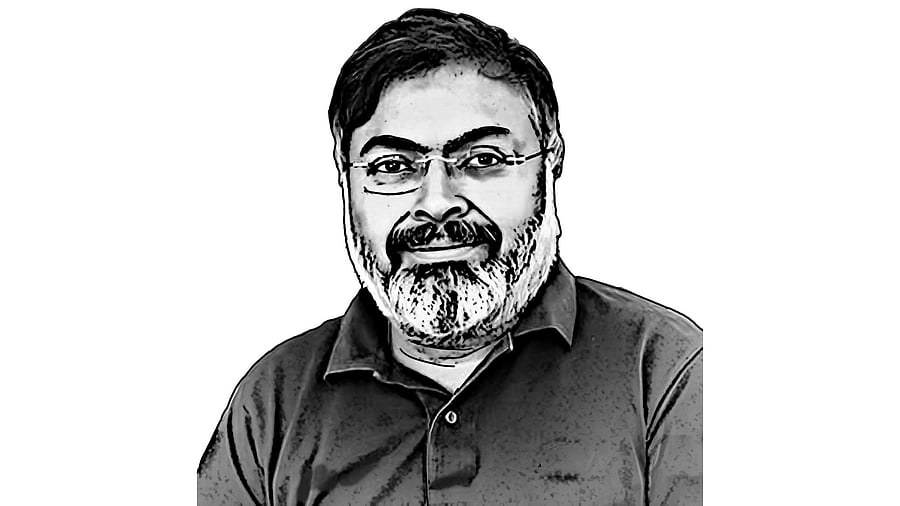
Devdutt Pattanaik works with gods and demons who churn nectar from the ocean of Indian, Chinese, Islamic, Christian, even secular mythologies
A thousand years ago, Islam entered India. With it came a new institution, the dargah, where the object of reverence was the tomb of a holy man. This dargah-based Islam irritated orthodox Muslims, but it helped spread the Islamic faith. Islam was traditionally centred around laws, their interpretation, and their adherence, with the Caliph being the first follower. The Sufis, however, didn’t talk about law; they talked about love and direct communion with God, an idea that had its roots in Central Asia.
The Sufis began arriving in India from the 12th century onwards, and across India, their followers built dargahs in their memory. Attached to the dargah was a khanqah, or hospice, where followers lived and devotees visited. In the khanqah was a langar, a communal kitchen where everyone could come and eat. Every evening, there would be sama, or singing and dancing, to connect with the divine. The vocabulary was distinctly Persian. This was the space where qawwalis were sung, God’s name was chanted, and philosophical ideas were discussed. Over time, these Sufi saints became extremely popular, becoming potential threats to local political warlords, who tried to keep the Sufis on their side by donating land and even giving their daughters in marriage to them.
Before the Sufis arrived, temples were central to the Hindu ecosystem. Temples empowered the king, managed by Brahmins who performed various tantric rituals that strengthened the king and his kingdom in exchange for land and rewards, offered through the temple’s deity. The focus in Hinduism was on the temple and the deity within, not on any human figure. The bhakti of Alwar and Nayanar was linked to temple deities, not to gurus. The adoration of human leaders was popular in the Buddhist and Jain circles – the teachers, the arhats, the gurus, the swamis, yatis, the bhattakaras. These were treated as minor communities when Islam arrived.
With the arrival of the Sufi movement, we see the rise of charismatic gurus across India, who often seemed to overshadow the temple deities. The old Tantrik rituals were replaced by a new kind of bhakti. The idea of bhakti for the holy man emerged in the south, spread along the coasts to Gujarat and Bengal, and from Bengal to the Gangetic plains. The object of devotion was a god who lived everywhere, not just inside a temple. This god was mediated through the writings and songs of a human saint.
Initially, scholar-monks like Ramanuja (1200 AD) thrived in the shadow of the grand temple complex of Ranganathaswamy in Srirangam. The Pancha-sakhas and Chaitanya (1500 AD) were linked to Puri Jagannath. In Rajasthan, descendants of Vallabhacharya, known as Gosainji, established the Shrinathji haveli worship (1600 AD). The saint-monks also benefited from political patronage.
But many saints shunned temples altogether. Basavanna (1200 AD), who started the Lingayat movement in Karnataka, and Chakradhar Swami (1300 AD), who began the Mahanubhav movement in Maharashtra, rejected temples, caste, and image worship. Lingayats carried the Shivalinga around their neck. The Mahanubhavis collected stones from spots visited by their guru. In Assam, at sattras established by Shankar Deb (1500 AD), Krishna’s name was chanted, but no image was worshipped.
At the same time, many hermit-warrior groups emerged. The Mahant with his akhada, or gymnasium, where scholars studied the Vedas and various tantric practices, seemed to be like ancient Buddhist viharas and more recent Sufi khanqahs. Some akhadas also provided military training, mirroring the ghazis, who were Sufis with swords in hand.
In many cases, saints were considered embodiments of God himself. For Chaitanya’s followers, he was the embodiment of Radha and Krishna; for Mahanubhav followers, Chakradhar Swami was Krishna on earth. Greater value was placed on bhakti saints and various gurus, more than the gods enshrined in temples. Temples could be broken, not songs composed by the guru.
Today, we find gurus speaking about gods like Ram and Krishna in their Ram-katha and Bhagavat-katha, yet the guru has become the focal point. These gurus’ creative and westernised interpretation of Vedanta is seen as ‘true’ Veda. The guru’s followers constitute a lucrative vote bank for politicians. The guru, therefore, dares not dissent.
The Sufi model of masculine holy men who provide administrative and political support to the sultans is being adopted to create a new form of Hinduism, known as Sanatan, dominated by saffron-robed gurus, with dominating masculine personalities, who claim to be the sole spokespersons of the divine. The sight of these holy men in grand processions is now available for all to see at festival gatherings and pilgrim spots. This 21st Century saint-based Hinduism is very different from the temple-based Hinduism that shaped pre-Islamic India.